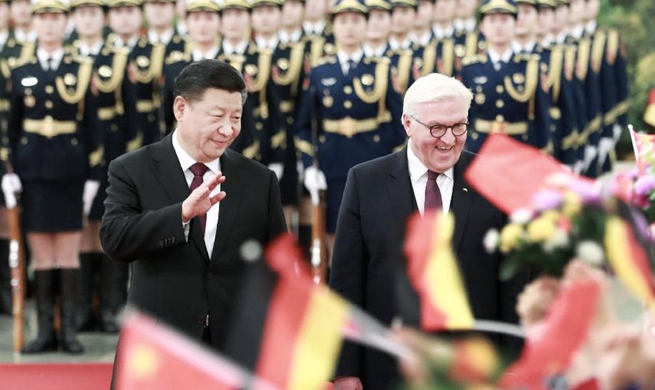NANNING, Dec. 11 (Xinhua) -- Each week, 68-year-old Huang Tianheng travels 12km uptown to teach a group of children wearing colorful traditional clothes to sing songs in Zhuang, a language used by China's ethnic minority Zhuang people.
The choir at Qingle Elementary School, located in Nanning, capital of southwest China's Guangxi Zhuang Autonomous Region, has toured across China, and some members have even performed in Paris.
Zhuang people are one of the ethnic minorities with the largest population in China, and most of them live in Guangxi, which has 11 native ethnic minority groups, with a total population of 20 million.
China has made efforts to preserve the languages and traditions of ethnic minorities while achieving development, by pushing for bilingual education in the region.
Wuming District, where the elementary school is located, is the birthplace of Zhuang culture. Huang used to be the head of the local culture center before his retirement.
Now, teaching local children Zhuang culture has become his new job. At the Qingle Elementary School, bilingual education started as early as 1980s. A total of 330 students in the school are being taught in both languages.
Efforts to preserve Zhuang language has started decades ago. In 1952, State Council, China's cabinet, approved a plan to preserve the language. In 1982, Guangxi released a scheme for the Zhuang writing system based on 26 Latin letters, bringing standardization to the Zhuang written language.
More recently, in August, the region implemented regulations to increase Zhuang language usage in public areas and step up bilingual education and the training of bilingual teachers.
Apart from Zhuang, Guangxi has also opened bilingual courses in elementary and middle school for Jing people, which has a population of around 20,000.
"With these efforts, Jing's ethnic language has been better preserved and more young people can speak and write in the language," said Su Weifang, head of the Jing language and cultural inheritance center in the Guangxi city of Dongxing.
Local statistics show that there are 269 bilingual schools in Guangxi covering almost all Zhuang populated counties and prefectures, with more than 140,000 students.
As China's economy took off in the last four decades, many ethnic minorities are learning Mandarin to get better education and job opportunities.
"Learning Mandarin is like mastering a skill to fight poverty," said Pan Jifeng, a Yao woman who lives at a Yao village in the tourist city of Guilin.
Her village receives around 400,000 to 500,000 tourists each year and each household is granted more than 10,000 yuan (1,400 U.S. dollars) in dividend from the ticket revenue alone.
"Speaking Mandarin has helped boost local development. It works like a bridge to enable communication between ethnic minorities and the outside world," said Huang.
Local statistics showing 84 percent of the Guangxi population can now speak Mandarin.
"Bilingual education can help students get in touch with modern knowledge and inherit their native culture," said Wei Songhao, a Zhuang language teacher at Qingle.

















